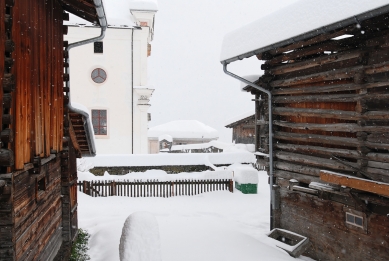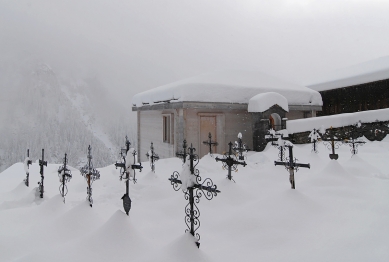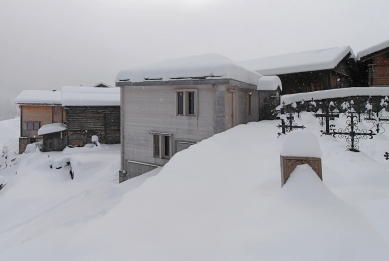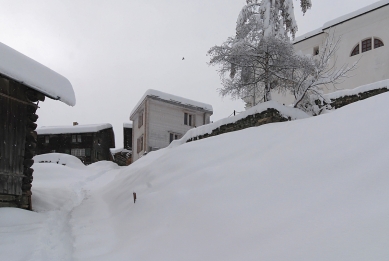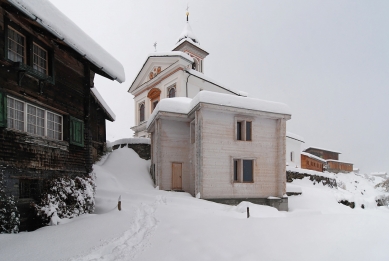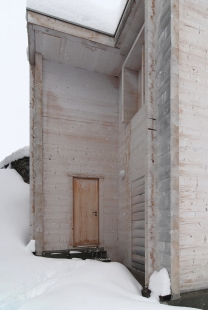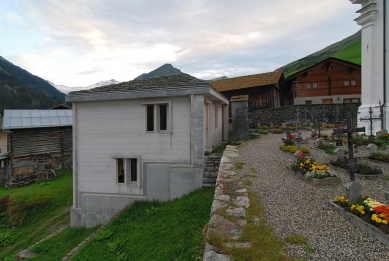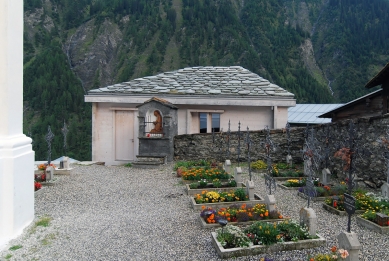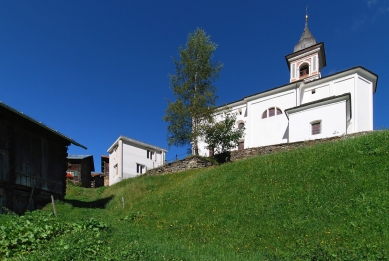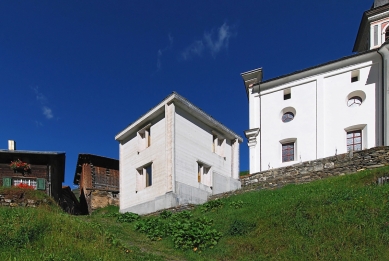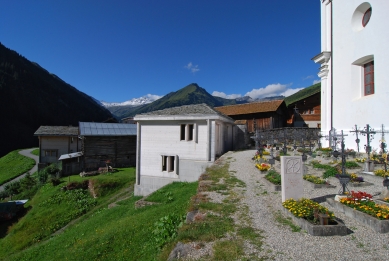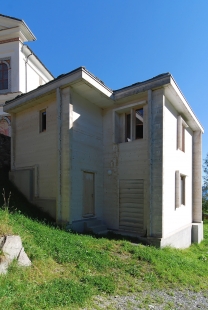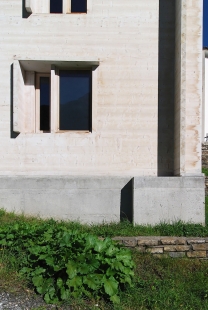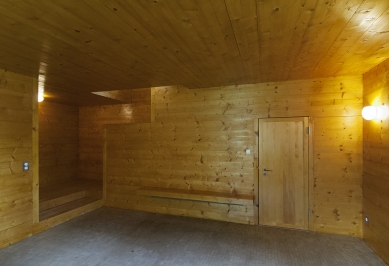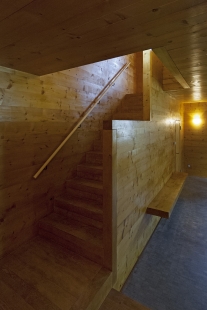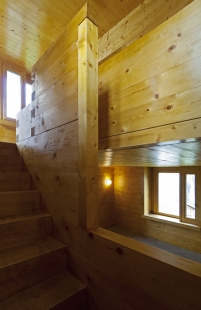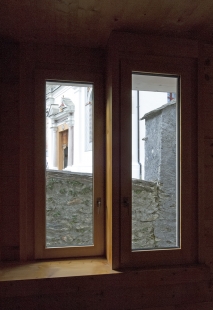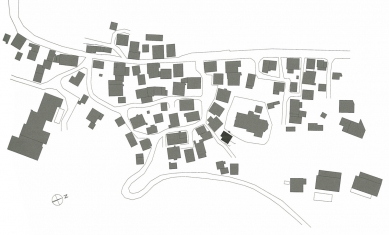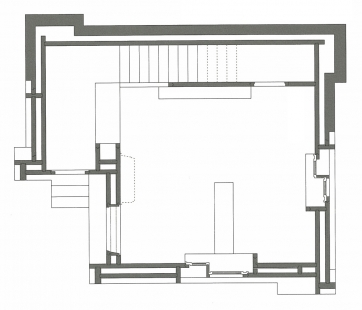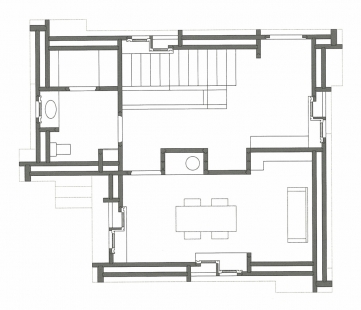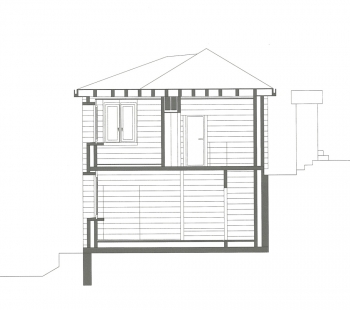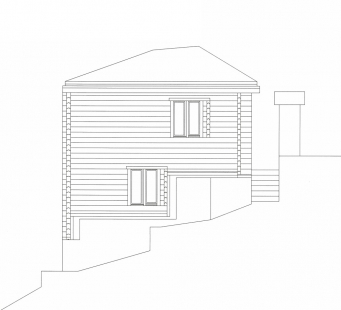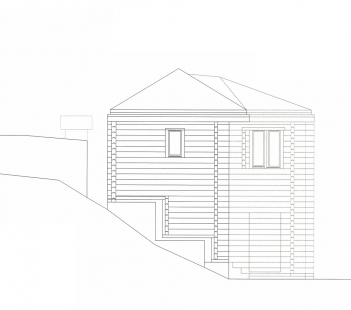
A community mortuary building
Stiva da morts – Totenstube

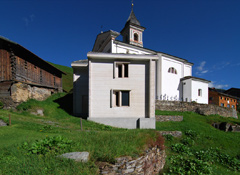 |
The community mortuary building offers a special place for the rites of transition that occur before the funeral itself, one that symbolically, physically and in terms of its ambiance lies somewhere between the everyday life of a village and the sacral grounds of a church and cemetery. In fact, the community mortuary building is located next to the cemetery and is oriented to it, yet is still clearly outside of it. Like the surrounding residential buildings, it is built of wood and yet it is painted white and almost resembles a church. Its exceptionally powerful corner supports protrude into the space and recall both the pilaster columns of the church and the projecting walls of local houses. Its rooms emit a warm aura reminiscent of village parlours, albeit the wood here appears more solid and imposing, and has an unusual physical presence that conveys a feeling of strength and security. The almost rough-hewn solidity of this ‘Strickbau’ which is visible and palpable also in its interior, is alienated by means of a shellac finish that gives a matt shine to its surfaces, either honey-coloured or golden, depending on the light. It is true that these lack the deep shine of polished musical instruments yet they nevertheless appear more precious, and have a more intensive gleam than the wooden walls of domestic parlours, the patina of which is born of many years of use.
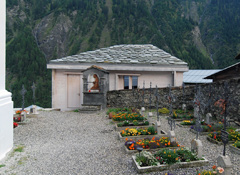 |
Large windows provide various views into the depths of the valley or across the mountains, as well of the village and cemetery, yet because the windows are set unusually low in the walls, intimacy is nonetheless assured. Only a few steps need be taken to remain protected from unwanted glances from outside. The windows are both a spatial gesture that links the interior and exterior, and a means of connecting the inner and outer layers of the double layered-beam wall. The window in the vicinity of the deceased is fitted with a sliding shutter, so that too bright light might be shut out.
The building was constructed with a virtuosity that is nonetheless serviceable and quasi pragmatic. One can marvel at how the outer wall is hinged onto the inner wall: a means of surmounting the difficult problem - caused by the severe slope of the site - of building walls of different heights; or at how, on the upper storey, a considerable span width was bridged by suspending it from the double girder concealed in the roof construction. This is unimportant however. The construction design is not intrusive. It remains in the background.
The community mortuary building has two entrances, one leading in from the cemetery and one from the village. It is important to Gion Caminada that people can choose which way they enter the building. The catafalque is not a fixed permanent feature, as the building is intended to serve other purposes than taking leave of the deceased: a chamber concert, a reading, or simply afternoon coffee and cake, for example. The building, a parlour for the village, allows for all of this. As do death and mourning.
Martin Tschanz
SCHLOHAUFER, Betina. Gion A. Caminada. Cul zuffel e l'aura dado, Quart Verlag, Luzern 2008, p.39-41.
0 comments
add comment



